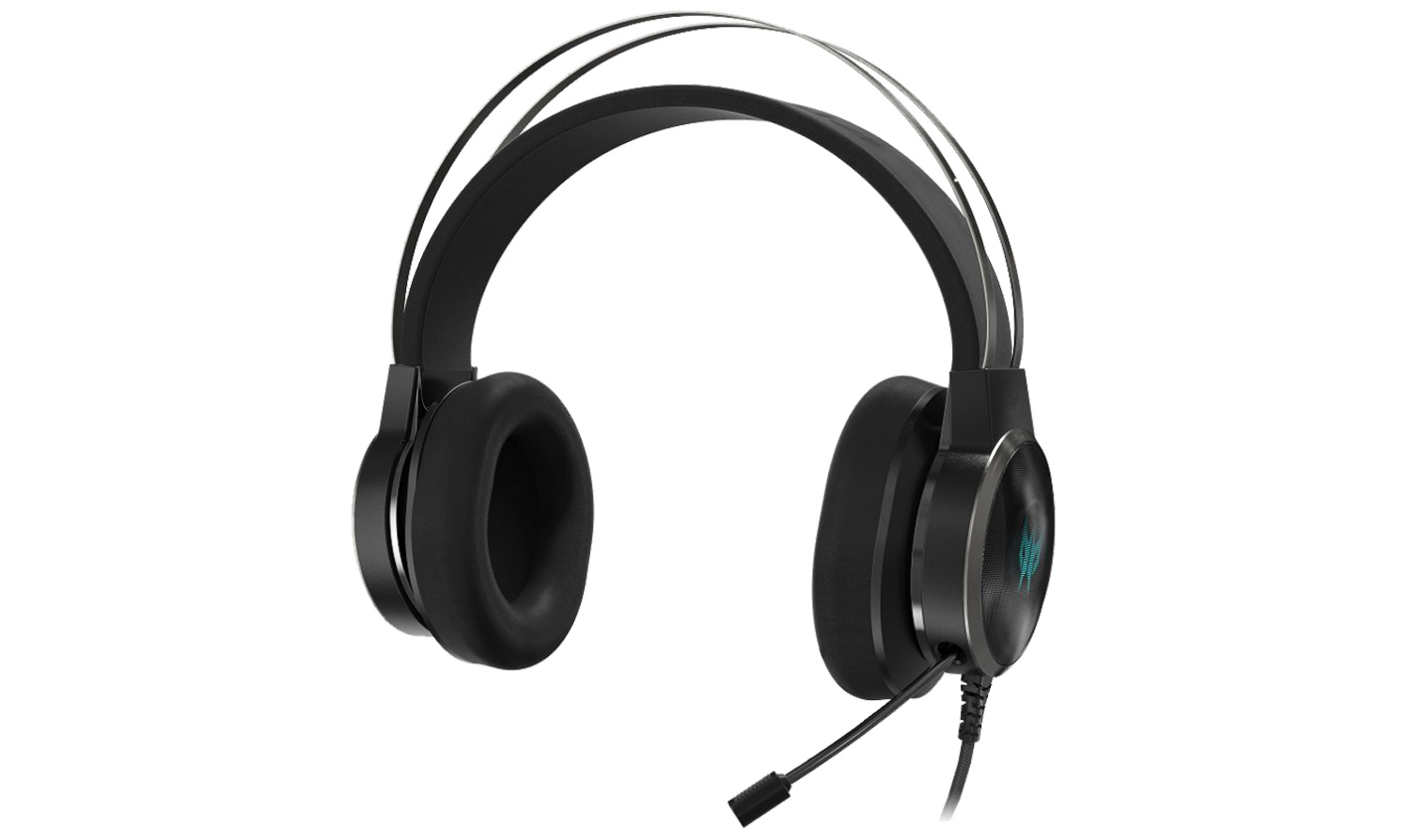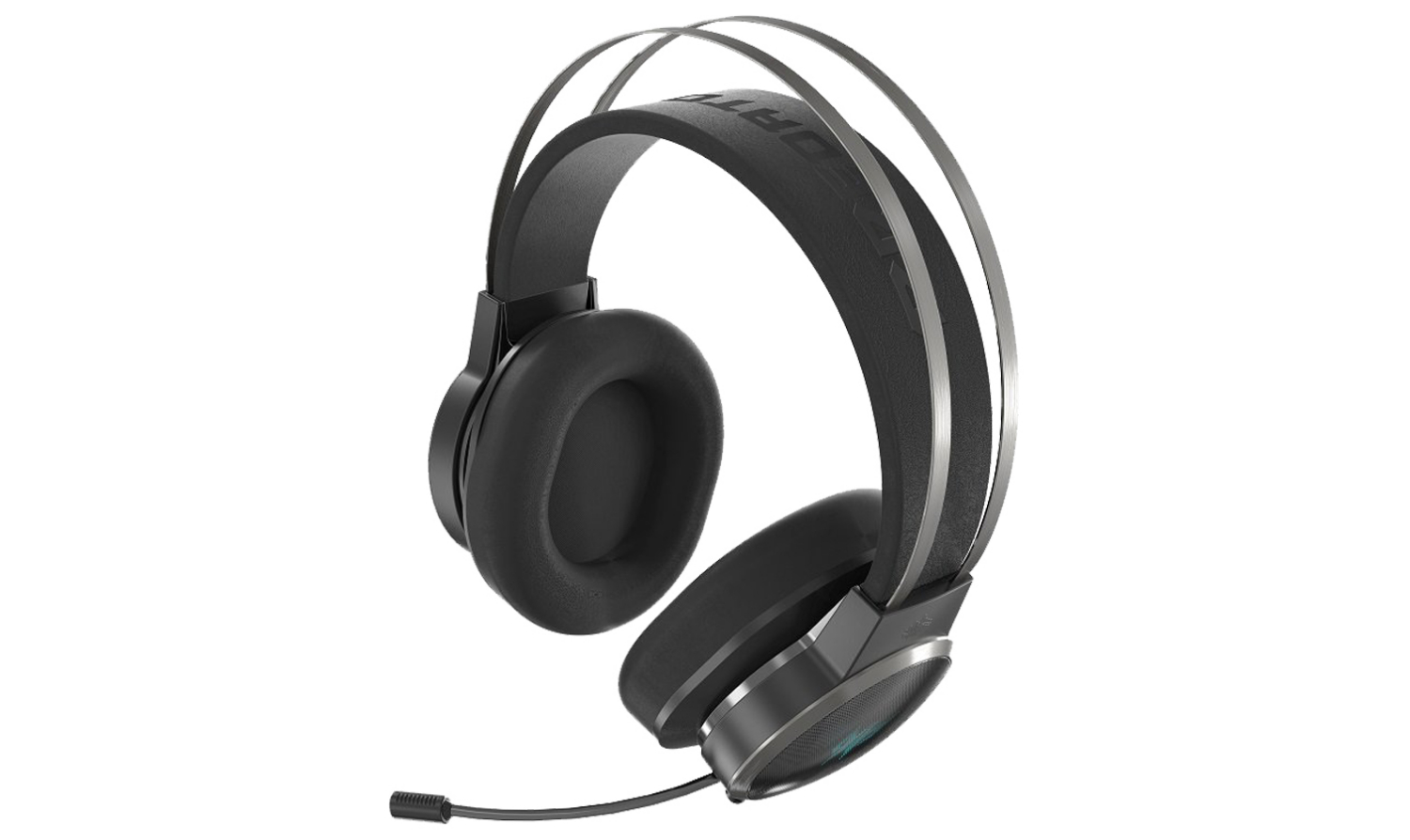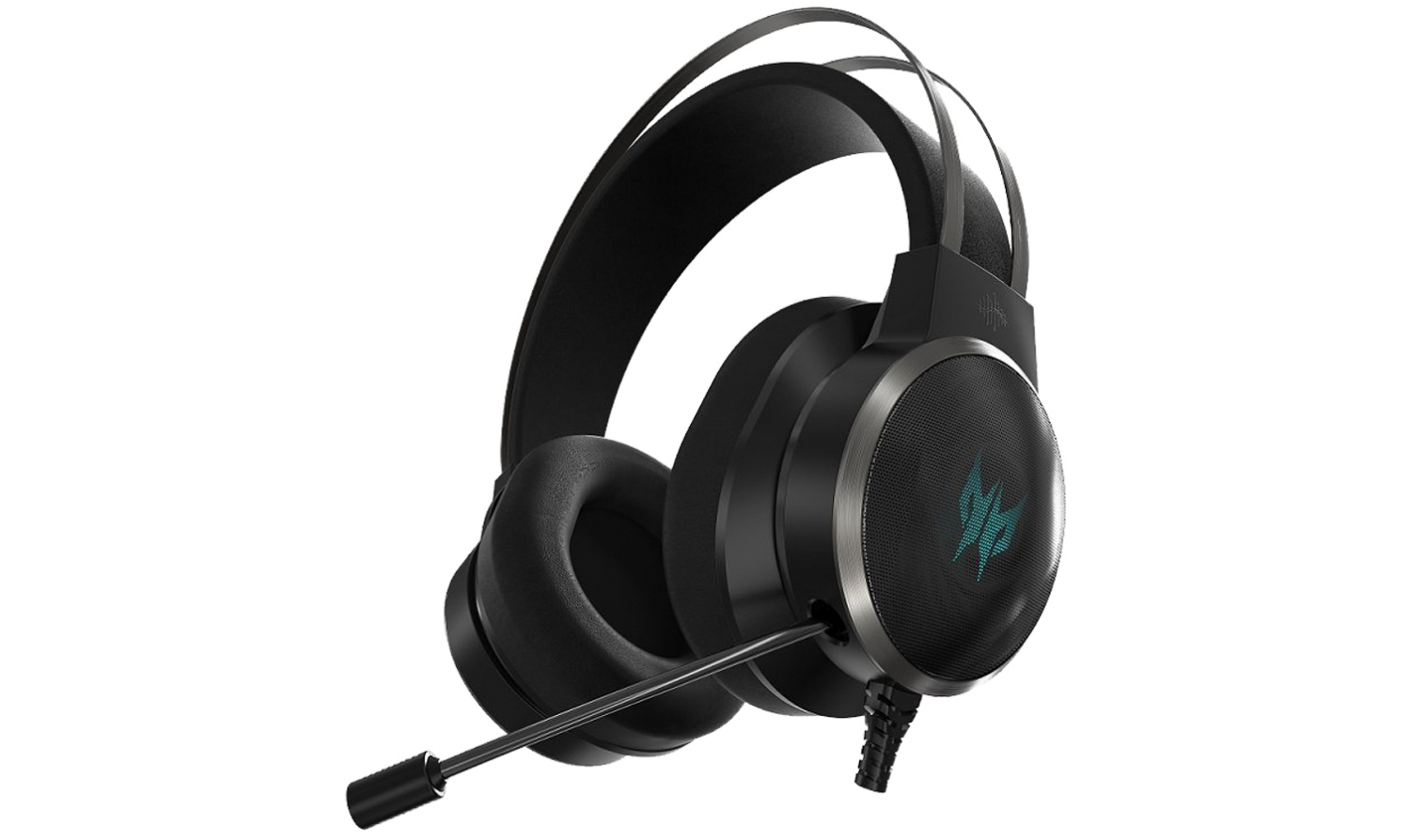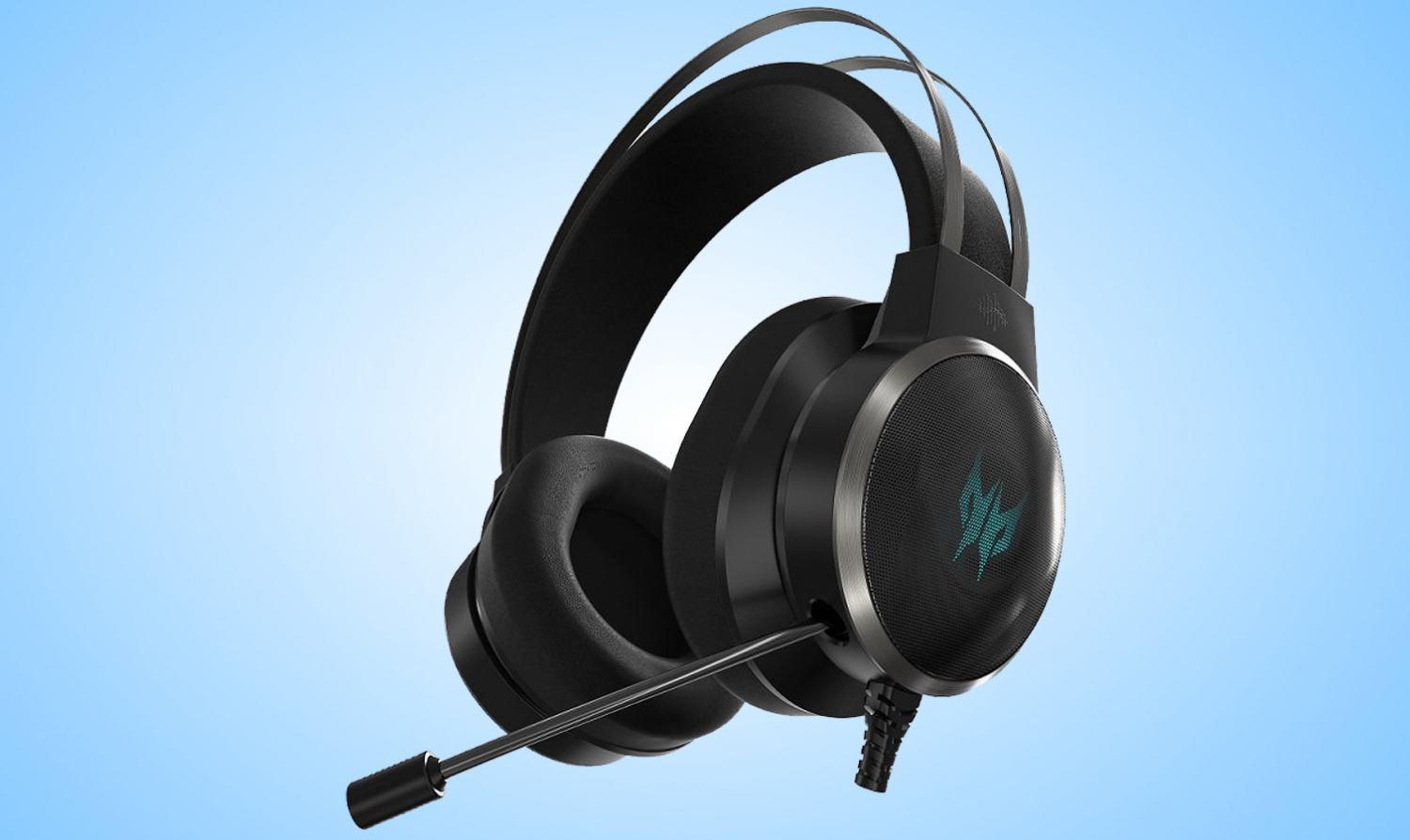Tom's Guide Verdict
Many aspects of the Acer Predator Galea 500 don't work quite right, but you can still squeeze some good sound out of it.
Pros
- +
Clever amp
- +
Great 3D sound
- +
Elastic headband
Cons
- -
Imprecise fit
- -
Dull stereo sound
- -
Tedious calibration
Why you can trust Tom's Guide
When I first put the Acer Predator Galea 500 ($300 MSRP; $200 at most retailers) on my head, I couldn't hear anything out of the right ear cup. After a few seconds, I figured out how to address the problem, and was reasonably satisfied with the sound. The experience proved to be emblematic of my overall appraisal of the Galea 500: There are a lot of things about it that don't work quite right, but if you can finagle them into place, the headset's performance ranges from adequate to impressive.
The push-pull between effort and quality permeates the whole product. It's hard to find a good fit, but the Galea 500 has plush, flexible components. Getting good sound requires repetitive, tedious steps, but the in-game audio can sound extremely immersive. The amp will never sit quite right, but it's a very convenient way to manipulate the whole peripheral. I don't dislike the Galea 500, but I didn't have any desire to use it again once I was done testing it, either.
Design
Everything about the Galea 500 is big. The box is big — and it even opens up like a trophy case, revealing a huge headset with its very own cardboard stand. Once you disassemble the package enough to remove the headset, you'll find an 8.8 x 7.5-inch device that weighs about 13 ounces.
My ears felt lost in the cavernous over-the-ear cups, and the headset promptly sunk down as soon as I put it on my head. There's no way to tighten the headband; it either fits, or it's too big.

Apart from that, the Galea 500 is attractive enough. Two steel bars brace the padded headband on top, while an understated, illuminated, blue Predator logo sits in the center of the outside of each ear cup. There are no buttons on the headset itself, just a retractable microphone in the left ear cup.
The only interesting flourish comes in the form of the amp, which hangs from the Galea 500's long USB cable. The amp is where you'll control just about everything the headset has to offer, including the volume, equalization, calibration and 3D sound.

The only problem is that there's nowhere good to put it. The cord is too short to rest the amp on a desk. Although there's a clip on the back of the amp, it's way too short to reach the average person's belt.
Get instant access to breaking news, the hottest reviews, great deals and helpful tips.
The only thing I could think of was to clip the amp to a breast pocket — except I didn't have one — or a shirt collar, where I couldn't see it. In the end, I let the amp dangle in space and fished it out whenever I needed it, which was often. It's a surprisingly inconvenient design for such an expensive headset.
Comfort
I have a fairly wide head and usually have to stretch headsets quite a bit before they fit properly. I bring this up only because the Galea 500 is the first headset that's too big on me, period. No matter what I did, the headset hung down, loosely, just a bit past my ears. If you have a king-size noggin, the Galea 500 is the headset you've been searching for all these years; otherwise, you're going to have to keep your head relatively still while you use it.
The Galea 500 is the first headset that's too big on me, period.
Even though I couldn't get a good fit, the Galea 500 is not the most uncomfortable headset I've ever worn. The elastic headband obviates the need for tedious adjustments, and its loose fit means it never gets too tight. Still, without a good place to rest the amp, the left ear cup felt unbalanced and made the relatively light headset feel a lot heavier than it really is. I never felt undue pressure on my ears, nor did the Galea 500 ever get painful. But it wasn't all that much fun to wear, either for a few minutes or a few hours.

I handed the Galea 500 off to a co-worker, who also found that the ear cups were too large and that the amp pulled down on her hair. Like me, she didn't think it was uncomfortable, but she couldn't get a perfect fit, even after using it for a few hours.
Gaming Performance
The first thing I noticed about the Galea 500's in-game performance is that, by default, it's pretty quiet. The amp's volume buttons tie directly into Windows 10's volume control, which is nice. But you'll need to turn it up into the 20s before it's audible, 30s before it's suitable for a game and perhaps up to the 50s before it delivers an immersive experience. Granted, it can get incredibly loud after that, but it's an unusual volume curve, compared with the average gaming headset, which offers peak performance somewhere in the 20s.
Once that's settled and the audio is calibrated (more on that later), the in-game audio is impressive — provided you use the 3D sound setting. The Galea 500 offers four profiles. There's one surround-sound setting for games, called 3D sound; and three stereo equalization profiles: Movies, Music and Sports.
When it's firing on all cylinders, the 3D sound can be extremely immersive.
The lack of a dedicated stereo-sound option for games is a bit of an issue, since not every genre lends itself well to surround sound. (Single-player narrative adventure games come to mind.) But when it's firing on all cylinders, the 3D sound can be extremely immersive. In StarCraft: Remastered, the grunts and cries of my Zerg forces as they chewed through a Terran base sounded immediate and nuanced, while pinpointing my enemies' locations as D.Va in Overwatch gave me a competitive edge.
The 3D sound even got the job done in Baldur's Gate: Enhanced Edition and World of Warcraft, even though the peripheral seems designed with competitive genres clearly in mind. The Galea 500 provides a solid balance between dialogue, music and sound effects, and while a dedicated stereo option would have been nice, the 3D sound ranges from adequate to superlative.
Features
Unlike many headsets in its price range, the Galea 500 does not require — or even offer — any kind of customization software. As such, all of its functionality comes from the amp.
As discussed above, the amp doesn't sit anywhere very nicely, but otherwise, it's a pretty neat little device. You can press a face button to switch between 3D and stereo sound. On the right side, there's a button to change equalization modes, and on the right side, there are buttons for volume and calibration.

Calibration is the most interesting — and possibly most obnoxious — feature of the amp. Whenever you start a new application in 3D sound mode, you have to hit the calibration button to get proper equalization levels. The Galea 500 will then configure a sound profile instantaneously that matches whatever you're watching, playing or listening to.
I found that the calibration worked well and didn't take long, but it was obnoxious that I had to keep pressing it, over and over, each time I started a new application. For some reason, the Galea 500 favors the left channel considerably over the right one, meaning that, when I listened to certain pieces of music, or watched certain videos, I wouldn't hear anything at all from the right earphone until I pressed the calibration button. Having the feature available is a great option, but requiring continual calibration is more of a nuisance than having slightly unoptimized sound.
MORE: The Best Gaming Headsets for Fortnite
The retractable microphone has an unusual amount of reverb, and provides a forward, breathy quality to voices during chat. It's good enough for most multiplayer matches, but a premium headset should really have a better mic built in.
One thing to note: Although the Galea 500 advertises "cross platform" compatibility on the box, it does not work with either the PS4 or the Xbox One. As far as I can tell, Acer is trying to communicate that the product works with both PCs and Macs, which I'm sure is good news for the five or six Mac gamers out there.
Music Performance
When set to the stereo Music equalization, the Galea 500 sounds OK. The headset doesn't have a very intimate sound, instead making music sound like you're listening to it in a room with moderately priced speakers, rather than directly in your ears.
Furthermore, while the sound is clear and crisp, it isn't balanced very well. I listened to music from Flogging Molly, Old Crow Medicine Show, The Rolling Stones and G.F. Handel to see how the headset performed across a variety of genres. The forward, brassy treble was a huge benefit while listening to rhythm guitar riffs, or banjo tunes just under the main melody.
But the bass was almost nonexistent, which was just as much of a problem for 18th-century oratorios as it was for Celtic punk bands from Los Angeles. Because you can't set up your own EQ profiles, you're going to miss a lot of important undertones in music.
MORE: SteelSeries Arctis 5 Review — A Gaming Headset You'll Want to Wear Out
I handed off the Galea 500 to my co-worker Sherri Smith, who has an audiophile's ear for music. She said she appreciated the aural distance (she described it as a "concert hall" feel, and said it's especially good for listening to tracks from live shows), and maintained that the powerful treble brought out a lot of depth in the mid and upper ranges of songs.
She agreed that there's not much bass, although this shortcoming didn't hamper her overall opinion of the music performance that much. Your mileage may vary.
Bottom Line
The Galea 500 has a few interesting features going for it. Using a simple amp, instead of convoluted software, to handle things is a feather in this headset's cap. Elastic headbands are always a step in the right direction. And the 3D sound can be a huge boon during certain games.
But the headset has too many shortcomings to recommend unconditionally. The calibration feature introduces as many problems as it solves, it's nearly impossible to get a good fit, and the music performance and microphone should really be better in a headset that retails for $200 to $300.
In a similar price range, both the SteelSeries Arctis Pro ($250) and the Astro A40 ($250) offer richer feature sets, more balanced sound and better fits. The Galea 500 seems like much more of a niche product — although I can't decide exactly what kind of gamer would be in that niche.

Marshall Honorof was a senior editor for Tom's Guide, overseeing the site's coverage of gaming hardware and software. He comes from a science writing background, having studied paleomammalogy, biological anthropology, and the history of science and technology. After hours, you can find him practicing taekwondo or doing deep dives on classic sci-fi.

